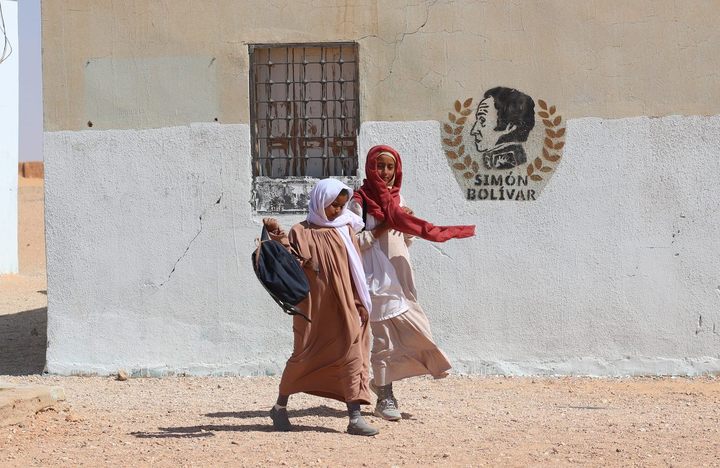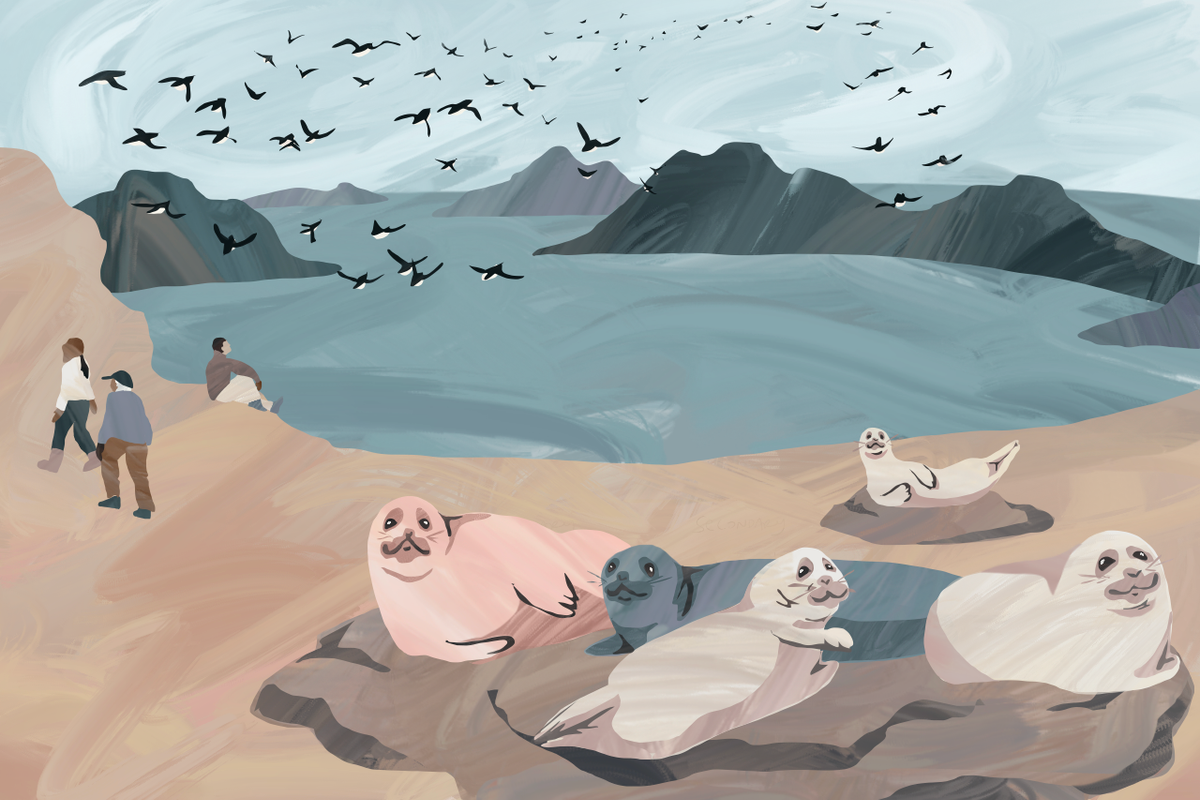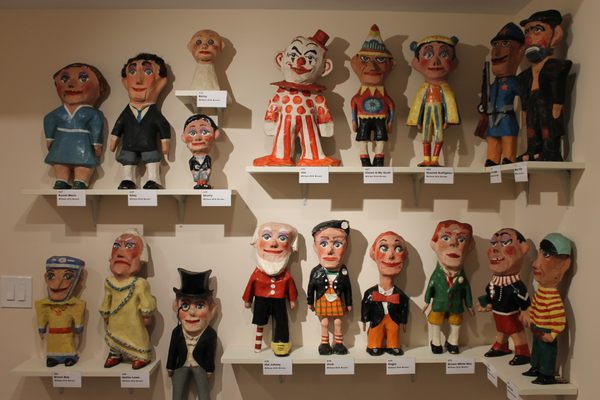
A Year-Long Trip Around the World, Through Atlas Obscura Stories
From Greenland to Western Sahara to Nepal and beyond, here are some of our best cultural stories from 2023.
The best Atlas Obscura stories don’t simply transport you to unexpected places. They introduce you to people you have not had the opportunity to meet before, cultures that are at once new and surprisingly familiar. This year, we traveled from Western Sahara, where the Sahrawi people have found kinship with Cubans, 4,580 miles away, to the disappearing marshes of Iraq, home of the Marsh Arabs of Hawizeh persevere. We sampled kiviaq in Greeland and water from the 1,500-year-old fountains of Kathmandu. Here is a whirlwind trip around the world, through some of our favorite cultural stories published in 2023.

Inside Greenland’s Misunderstood Winter Delicacy
by Mark Hay
For many in northwest Greenland, the iconic flavor of winter is that of fermented meat, perhaps most iconically kiviaq, a dish made by packing 300 to 500 whole dovekies into the hollowed-out carcass of a seal. The fermented seabirds are a staple of gatherings during the winter, especially among the Indigenous people. “Kiviaq is a special dish to the Inughuit,” says Hivshu, an Inughuit culture keeper. But beyond Greenland, kiviaq is notorious as an object of disgust and ridicule.
Welcome to the Little Cuba of the Sahara Desert
by Andrea Prada Bianchi and Pesha Magid
In the refugee camps at the border of Western Sahara in Africa, home to the Sahrawi people, who have been waging a war for independence against Morocco since the 1970, it’s not unusual to hear Spanish interspersed with Arabic, to see graffiti of Che Guevara, or to smell arroz cubano cooking. How did the Sahrawi form a bond with Cuba?

The Surprising Southern Roots of Sierra Leone’s Krio Homes
by Laura Kiniry
In Freetown, the capital of Sierra Leone, Krio bod os (“board houses”) line the streets. These timber-frame structures with stone foundations and shingled roofs, shuttered windows and covered porches recall the American South—a style familiar to Sierra Leonean Krio, formerly enslaved peoples who returned to their ancestral lands, and their descendants. The houses are the physical legacy “of a group of people who endured so much in their quest for freedom,” says Isatu Smith, the managing director of the West Africa Heritage Consultants and a Krio herself. But can the now-crumbling houses be saved?
Inside Kenya’s Women-Only Village Where Traditional Beaded Necklaces Are Symbols of Power
by Nora Wallaya
In the tradition of the Samburu people of Kenya tradition, beaded mporo necklaces are gifted to young women by their betrothed so that they can begin their necklace collection. The more elaborate the gifted beads and subsequent necklace, the greater her husband’s wealth and status. But the women of Umoja in central Kenya no longer need a man to make their mporos. “We buy our own beads now,” one says, “because we make our own money.”
The Stark Beauty of Tushetian Shepherds’ Journey Across Georgia’s Caucasus Mountains
by Sarah Durn, Associate Editor
As spring begins to melt the snow in the mountains of northeastern Georgia, shepherds drive thousands of sheep across a perilous mountain pass to the stunning meadows of the Tusheti highlands. The meadows of the Tusheti have been called the last wild place in Europe and make for ideal summer grazing for the hardy, local sheep of the region—but the steep path is full of dangers—that can sometimes prove fatal.

In Iraq, the Marsh Arabs of Hawizeh Persevere in a Changing Landscape
by Leon McCarron
In his new book Wounded Tigris: A River Journey Through the Cradle of Civilization, Leon McCarron explores the Mesopotamian marshes of the Iran-Iraq border. Linked to the Biblical Garden of Eden, the ecosystem—and the people who call the region home—have suffered decades of environmental destruction. Today, the marshes cover less than 50 percent of the area they did half a century ago.
How This Demon Dance Banishes Illnesses in Sri Lanka’s Remote Jungles
by Zinara Rathnayake
In the jungles of central Sri Lanka, hundreds of dancers and drummers gather each spring for kohomba yak kankariya—a ritual to cure illnesses, prevent disease from spreading, and seek blessings from the supernatural world. The elaborate ceremony tells the story of the mythic, magical queen Kuweni; in ancient times, the ritual was believed to have lifted the illness-causing curse she had placed on the region.

The Lost Waters of Kathmandu Are Needed Now More Than Ever
by Tulsi Rauniyar
Long ago, when the city was but a humble settlement, more than 400 stone water spouts were scattered around Kathmandu, standing like guardians of the life-giving liquid. The taps, locally known as dhunge dharas or hitis, have been an integral part of the city’s communal water supply for centuries. Now, as Nepal faces water shortages, Kathmandu’s residents are turning back to 1,500-year-old fountains—a sole water source for many.
Manuela Beltrán Is a Colombian Hero. What If She Never Existed?
by Juliana Castro Varon
Every revolution needs a hero, and Manuela Beltrán was the most unlikely of them all. A peasant town merchant with the rare skill of literacy, Beltrán would become a pivotal figure in the Colombian Comuneros Revolt of 1781. Today the country is filled with statues honoring her story. But historians have found little evidence of the revolutionary icon, a revelation that has amounted to an earthquake to Colombia’s history.

Decoding the Gun-Wielding Angels of Bolivia
by Amy Crawford
Angels are a common theme in Catholic art, but they rarely look as they do in churches in western Bolivia and southeastern Peru. Dressed in lace, feathers, and gold brocade—finery that resembled that of the Indigenous elites who administered Spanish colonial rule—these celestial beings are androgynous, posing like dancers with their wings discretely held behind them. They are also bristling with weaponry: Each is armed with a musket—specifically, an arquebus, a common infantry gun of the 16th century—and looks prepared to use it.




















Follow us on Twitter to get the latest on the world's hidden wonders.
Like us on Facebook to get the latest on the world's hidden wonders.
Follow us on Twitter Like us on Facebook